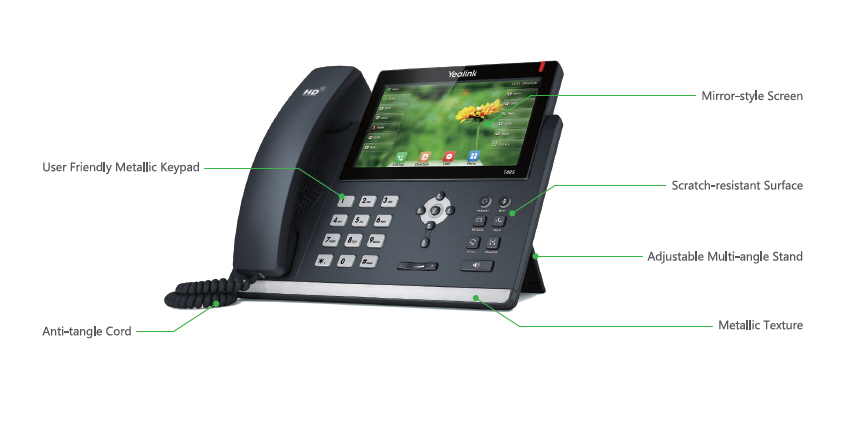Introduction
In today’s fast-paced business environment, effective communication is paramount. As technology evolves, many organizations grapple with outdated tools—specifically, legacy communication systems. These systems can hinder productivity and limit growth potential. In this article, we will explore the various challenges posed by these antiquated systems, delve into solutions that modernize business phone systems, and discuss strategies for seamless transitions to more efficient communication methods. By understanding the pitfalls of legacy systems and their implications for your organization, you can make informed decisions that drive success.
Understanding Legacy Communication Systems
What Are Legacy Communication Systems?
Legacy communication systems refer to outdated technologies that have been in use for a significant period and are often resistant to change. This includes traditional phone lines, outdated voicemail systems, and even older email platforms. They typically lack integration with modern digital tools, creating silos of information and complicating communication.
Key Characteristics of Legacy Systems:
Limited Functionality: Most legacy systems don’t support advanced features like video conferencing or instant messaging. High Maintenance Costs: Keeping these old systems running often incurs significant costs due to repairs and specialized knowledge required. Poor Scalability: As businesses grow, scaling these systems becomes increasingly challenging.Why Do Businesses Still Use Them?
Despite the challenges they present, many organizations continue using legacy communication systems due to:
- High initial investment costs in setting up new infrastructure Employee familiarity with existing processes Fear of disruption during transition phases
The Pitfalls of Sticking with Legacy Systems
Decreased Productivity
When employees struggle with outdated tools, it leads to inefficiencies that can stifle productivity. For instance:
- Slow call connections Limited collaboration capabilities Difficulty in accessing unified communications
Security Vulnerabilities
Old software often lacks critical security updates that protect against cyber threats. This exposes sensitive data to risks such as breaches or unauthorized access.
Examples of Security Breaches:
| Year | Company | Breach Type | |------|------------------|----------------------------| | 2017 | Equifax | Data breach affecting 147 million people | | 2020 | Zoom | Security vulnerabilities due to rapid growth |
Compliance Issues
With regulations like GDPR and HIPAA becoming stricter, legacy systems may not comply with current laws, putting businesses at risk of hefty fines.
Tackling the Challenges Posed by Legacy Communication Systems
To overcome the challenges associated with legacy communication systems requires a VoIP Phone System Walnut CA thoughtful approach:

Assessing Current Needs and Future Goals
Before making any changes:
- Evaluate your current communication needs. Understand where your business is going in the next five years.
Questions To Consider:
What features are essential for our team? How do we plan on scaling operations?Exploring Modern Alternatives
Transitioning from a legacy system doesn’t mean starting from scratch; instead, consider modern alternatives like VoIP (Voice over Internet Protocol) or unified communications as a service (UCaaS).
Benefits of Modern Business Phone Systems:
- Enhanced collaboration through integrated tools Cost-effectiveness compared to traditional setups Cloud-based solutions allow remote work flexibility
Implementing a Transition Strategy
Developing a Comprehensive Plan
A successful transition plan should include:
Assessment of existing infrastructure. A timeline for implementation. Training programs for staff.Pilot Testing New Solutions
Before fully committing:

- Run pilot tests with small groups within your organization. Gather feedback to refine processes before a full rollout.
Training Your Team for Success
Creating Buy-In Among Employees
Change can be daunting; thus, it's crucial to involve employees early in the process:
- Host informational sessions explaining the benefits of new systems. Provide demonstrations showcasing improved functionalities.
Providing Ongoing Support and Resources
Even after implementing new business phone systems, continued support is essential:
Regular training sessions Accessible resources like FAQs or help desksMeasuring Success After Implementation
KPIs for Evaluating Performance Improvements
Post-transition evaluation is key to understanding if the new system meets organizational goals:

Reduction in response times Increase in employee satisfaction ratings Improved security compliance scores
Gathering Feedback From Users
Encourage users to share their experiences regularly:
- Conduct surveys after implementation phases. Create open forums for discussing ongoing issues or improvements needed.
Future-Proofing Your Communication Strategy
Staying Ahead of Technological Trends
Communication technologies are constantly evolving; staying informed allows companies to adapt quickly.
Trends to Watch:
Artificial Intelligence Integration Enhanced Data Analytics Capabilities Increased Use of Mobile PlatformsFrequently Asked Questions (FAQs)
1. Why should I replace my legacy communication system?
Replacing it boosts productivity through modern features and reduces maintenance costs while enhancing security compliance.
2. What are some signs that my current system is outdated?
Signs include frequent downtime issues, lack of integration with other tools, and increasing operational costs without clear ROI.
3. How much does it cost to upgrade my business phone system?
Costs vary widely based on size and complexity; however, cloud-based solutions generally offer more affordable options than traditional setups.
4. Can I integrate new technology with my existing software?
Most modern communication platforms offer integration capabilities; however, assess compatibility before transitioning.
5. What if my team resists change?
Engage them early in the process by providing training sessions that showcase how new tools enhance their work experience.
6. How long does it take to fully implement a new system?
Implementation time varies but typically ranges from a few weeks to several months depending on organizational size and readiness.
Conclusion
Tackling the challenges posed by legacy communication systems involves strategic planning and commitment from all levels within an organization. By recognizing the limitations of outdated technology and embracing modern solutions like advanced business phone systems, companies can enhance their overall efficiency and adaptability in an ever-evolving marketplace.
As businesses strive for growth amidst rapid technological changes, investing in updated communication frameworks becomes essential—not just as an option but as a necessity for sustainable success.